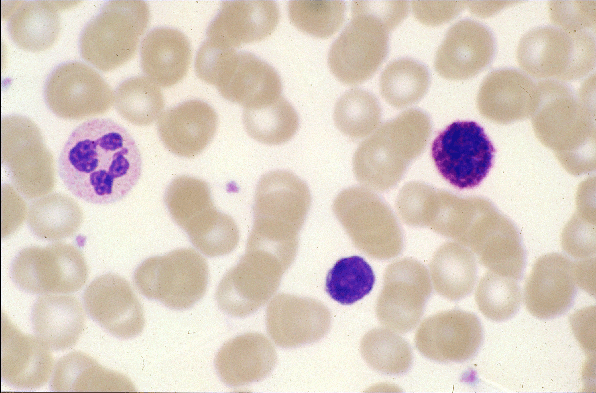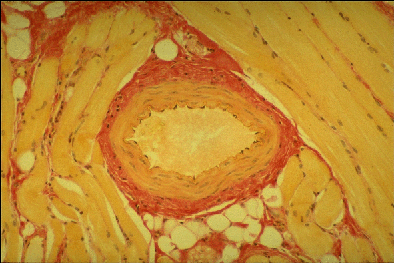B2 +D1 +D2 Red Blood Cells
Red Blood Cells:
- Red blood cells, or erythrocytes, are the most numerous blood cells
- They are 7-8 microns in diameter with a very characteristic biconcave disc shape
- Their cytoplasm consists almost entirely of the protein haemoglobin which binds oxygen or carbon dioxide for transport to/from the lungs to/from other parts of the body
- The biconcave disc shape provides for a short diffusion distance for these gasses with efficiency benefits in terms of loading/off loading the gasses
- Although 7-8 microns in diameter, red blood cells are highly flexible and so can squeeze through small capillaries with a diameter of only 5 microns
- In the peripheral blood, red blood cells are anucleate although during their differentiation in the bone marrow the developing cells are nucleated: as part of the final stage in red blood cell formation there is an unequal division of the cell to give an anucleate portion which passes into circulating blood and a nucleated portion with little cytoplasm which is retained within the bone marrow and ingested and broken down by macrophages
- Red blood cells take about 2-4 days to develop in the bone marrow, spend about 100 to 120 days in circulating blood before being broken down by macrophages, mainly in the spleen
Red Blood Cells: Image 1
- In this image of a blood smear, whole red blood cells are stained a grey - pink colour
- They are anucleate
- Some red blood cells can clearly be seen to have the characteristic biconcave disc shape
- The variety of other shapes is artefactual but reflective of the ability of red blood cells to change their shape in order to squeeze through narrow capillaries
- The three nucleated cells are white blood cells

Red Blood Cells: Image 2
- In this tissue section, red blood cells are present in the lumen of the blood vessel
- It is less easy to appreciate their biconcave disc morphology in tissue sections than in blood smears where the whole cell is visible

